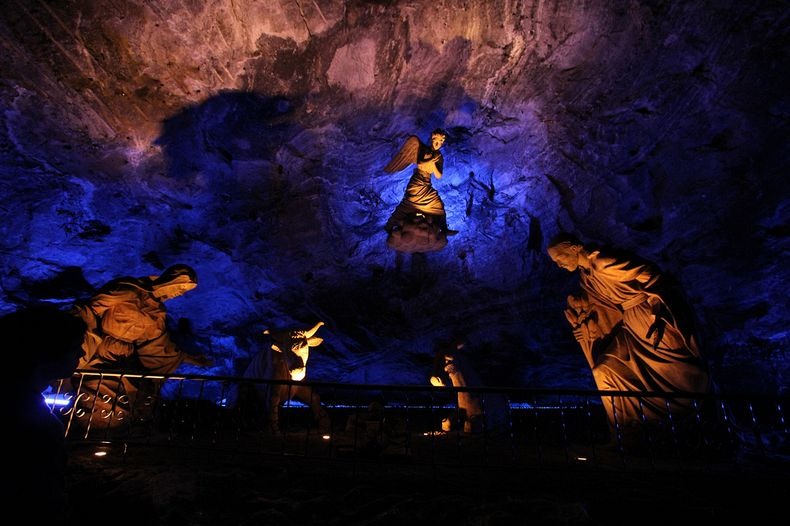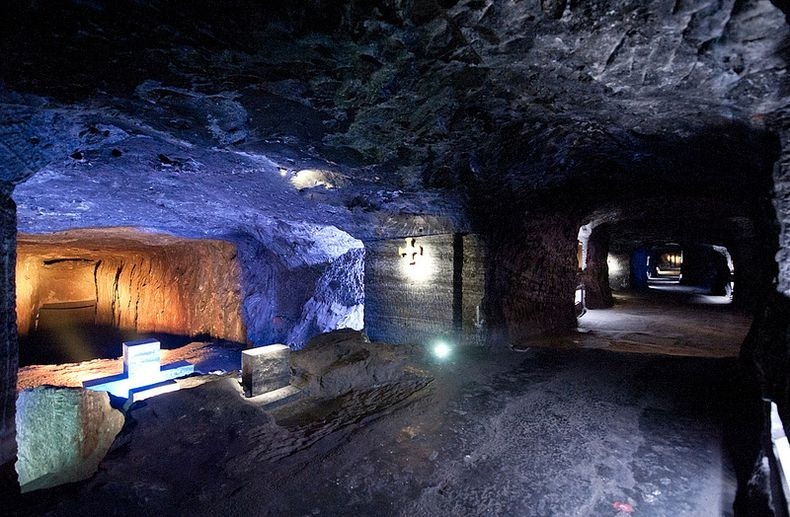The Salt Cathedral of Zipaquirá is an underground Roman Catholic church built within the tunnels of a salt mine 200 meters underground in a Halite mountain near the town of Zipaquirá, in Cundinamarca, Colombia. Though not as spectacular as the Wieliczka Salt Mine in Poland, it is still a very popular tourist destination and place of pilgrimage in the country. It is also a religious center and one of the most famous Catholic sanctuaries of the country, which commemorates Jesus Christ’s Stations of the Cross.
Years before the underground church was built, around 1932, the miners working in the salt mine had carved a sanctuary, as a place for their daily prayers asking for protection to the saints before starting to work. In 1950, they started constructing a bigger project - the Salt Cathedral, which was finally inaugurated on August 15, 1954 and dedicated to Our Lady of Rosary, Patron saint of miners. The cathedral had three naves and a monumental cross, which was illuminated from the base up, projecting a large cross-shaped shadow in the ceiling. The right nave included the Stations of the Cross icons and the Rosary chapel, with the Virgin of Rosary Icon. The left nave included the icons of the birth of Jesus and the baptism of Jesus, with a waterfall symbolising the Jordan River.
However, as the cathedral was carved inside an active mine, so structural problems and safety concerns led the authorities to shut down the sanctuary in 1990. In 1991 the construction of a new Cathedral was undertaken, 200 feet under the older one. Its various corridors and sanctuaries were achieved by making small but significant additions to the caves left behind by previous mining operations. Dramatic lighting in the interior and scale of its proportions are completely overwhelming.
Zipaquirá’s Salt Cathedral is considered to be one of the most outstanding architectural and artistic achievements of Colombian architecture, and it was even given the title of modern age architectural jewel.
The entrance to the Salt Cathedral of Zipaquirá. Photo credit


Sources: Wikipedia, Bogotatourisim




















Comments
Post a Comment